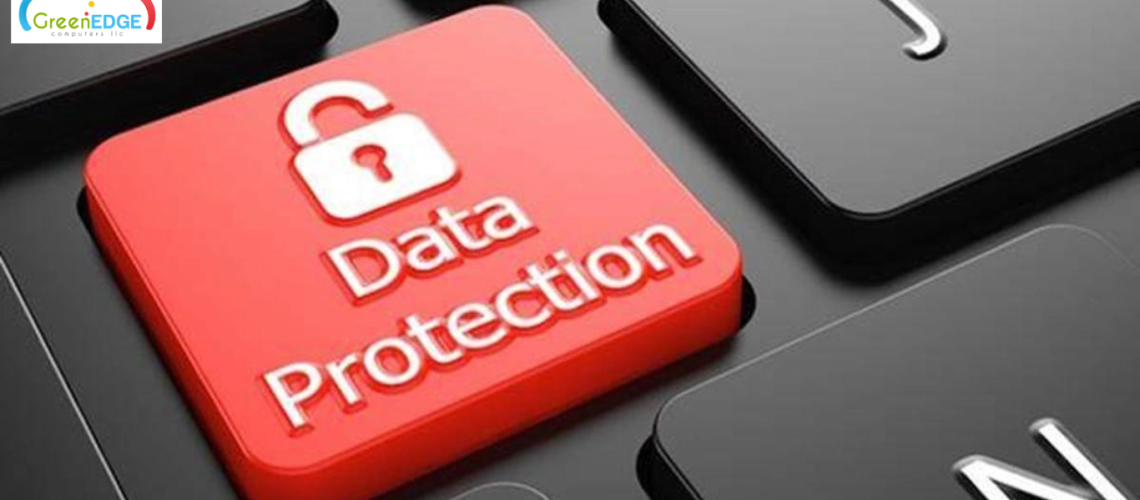Client data protection: Malware and ransomware attack rates are growing every year. Surprisingly ransomware attacks have doubled in 2021 according to the Verizon Data Breach Investigations Report. In addition to that, 50% to 75% of ransomware sufferers are small businesses. It is more important than ever for all businesses to take a multi-layer security strategy to protect their important business data.
Multi-layer defense is about adding layers of protection to the data to assure you are operating as securely as possible. A standard SMB security stack would look like this:
- Email security and advanced threat protection
- Endpoint security
- Patch management
- Ransomware detection
- Network security – firewall
- Multi-factor authentication
- Web-content filtering
- Standard user account permissions
- Backup and recovery
A key step when businesses want to ensure their data is fully secure is to focus on securing endpoints — especially desktops and laptops. In this blog post, we will cover the essential elements of securing endpoints effectively.
Email security and advanced threat protection
Email is still a key attack vector, it is necessary to have advanced threat protection (ATP) in addition to the primary email security given by the email provider. Effective pre-delivery email security stops malware from entering the atmosphere in the first place.
Client data protection: Datto SaaS Defense is prepared to stop attacks before they get to the end user, allowing MSPs to proactively protect against a variety of malware that targets the Microsoft Exchange inbox and the collaboration tools inside Microsoft 365 such as Microsoft OneDrive, Microsoft SharePoint, and Microsoft Teams.
Endpoint security
Antivirus (AV)
Antivirus software operates automatically in the background on the endpoints in your domain and scans your system for known malware based on regular virus definitions. When your AV catches malware, it extracts it from the endpoint to protect your business. While in the past having an AV on each endpoint was adequate, this is now regarded as just the first step in endpoint security.
Datto RMM makes sure antivirus is installed and up-to-date. MSPs need to have correct information about the situation of antivirus solutions on all endpoints. Datto RMM’s universal antivirus detection detects the existence of antivirus solutions on endpoints and reports the status of these solutions.
Endpoint detection and response (EDR)
EDR warns you of suspicious movement that may indicate a malware attack. Real-time alerts desire to reduce the time-to-detection of threats, which can have a considerable effect on the possibilities of recovery from happenings such as ransomware. Once an EDR tool has warned you of questionable action, a security analyst will commonly examine the details and choose the next steps. Moreover, these tools gather and monitor data about possible cybersecurity threats to the network. Your team can interpret this data to determine the root cause of security problems and utilize it to help incident response and management procedures.
Patch management
Client data protection: Patches are updates to operating systems, software applications, and networking devices, built to fix security issues. They are essential to designing an adequate cybersecurity system because they usually close security openings that could let bad actors enter endpoint devices and IT networks. Unpatched issues are one of the top causes of security violations. To assure timely deployment of patches businesses typically use patch management tools that provide them with thorough insights into apps and devices that are potentially at stake.
By employing automated patch management tools businesses can patch multiple endpoint devices at the same time. Enabling them to keep a constant security stance across all managed endpoints. Policy-based patching automation also permits businesses to be more efficient by decreasing bulky manual updates and improving the service delivery experience by minimizing end-user interruptions. Datto RMM’s built-in patch management engine creates patch management effortless and scalable via adjustable policies and automation.
Ransomware detection
Datto RMM’s unique Ransomware Detection functionality scans endpoints for ransomware disorder using the proprietary behavioral study of files and signals you when a device is infected. Once ransomware is caught, Datto RMM can separate the device and try to stop suspected ransomware methods to prevent the ransomware from circulating.
Backup and recovery
Your clients may have different requirements when it comes to their endpoint security system. However, one important component should be endpoint backup. When other endpoint security steps fail, an updated backup of the device will confirm that you still have access to all required information no matter what happens.
Simply, security starts with recovery. It is important to backup endpoints to allow recovery in case of a cyber happening. Datto Cloud Continuity for PCs increases endpoint security and acts as a last line of defense by rescuing data in case of a hardware failure, accidental omission, ransomware attack, or another tragedy. Cloud Continuity make sure endpoints can be restored to their pre-disaster condition quickly and easily.



